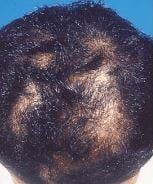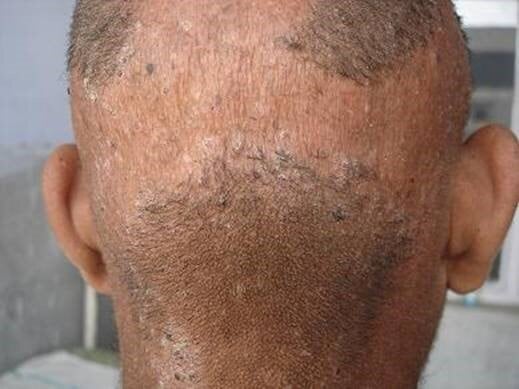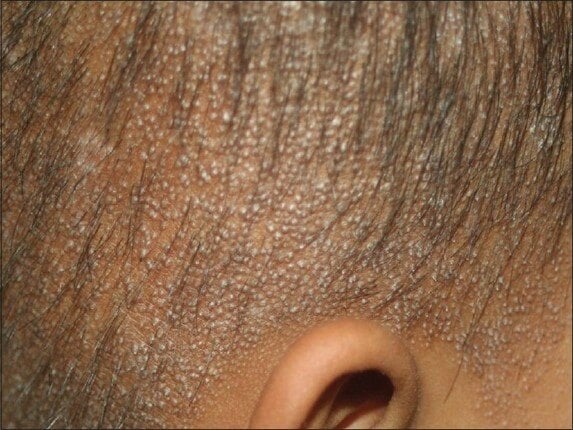Keratosis Follicularis Spinulosa Decalvans

What is Keratosis Follicularis Spinulosa Decalvans?
Keratosis Follicularis Spinulosa Decalvans (KFSD) is a rare genetic disorder that primarily affects the skin and hair. It is characterized by the development of small, spiny papules due to the plugging of hair follicles with keratin, leading to progressive hair loss, particularly on the scalp, where it results in scarring alopecia.
Symptoms & Causes

This condition is characterized by the development of small, spiny, follicular papules. These papules are typically found on the face, neck, and scalp but can also appear on other parts of the body. The papules result from the plugging of hair follicles with keratin, a protein that forms the structure of hair and skin. Over time, KFSD leads to progressive hair loss (alopecia). This hair loss can be particularly severe on the scalp, leading to areas of scarring alopecia where the hair follicles are permanently destroyed and replaced by scar tissue.
Many individuals with KFSD experience sensitivity to light (photophobia), which can affect their eyes and vision. In addition to the characteristic skin changes, some individuals with KFSD may have abnormalities in their eyes, such as chronic blepharitis (inflammation of the eyelids) and conjunctivitis.
Diagnosis & Treatments

Diagnosis of KFSD is usually based on clinical features, family history, and sometimes genetic testing. There is no cure for KFSD, but treatment focuses on managing symptoms, which may include the use of emollients, keratolytic agents, and other topical or systemic medications to reduce follicular keratosis and inflammation.
Given the rarity and complexity of KFSD, individuals with this condition often require the care of a dermatologist and, in some cases, an ophthalmologist for associated eye problems.
